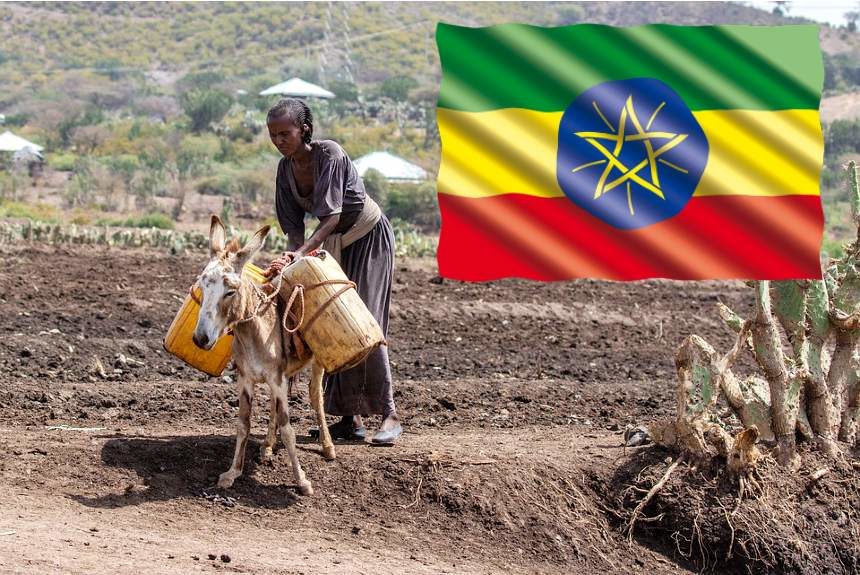Agricultural production in Africa is more vulnerable to climate change than any other socioeconomic activity. Experts predict that it will decrease by 8% to 22% by 2050.
Rain-fed agriculture is most vulnerable to changes in rainfall patterns and rising temperatures. The continuous dry season, combined with the effects of El Nino in the eastern part of Africa and Ethiopia, is causing food insecurity in the region.
Ethiopia has experienced temperature increases of 0.37°C every ten years for the past 55 years. Droughts and floods are the two most significant climate events that threaten the country’s agriculture sector now and well into the future.
Poor socio-economic conditions, such as inadequate public services, population pressure, a mounting poverty rate, political instability, and food insecurity, compound the country’s vulnerability to extreme events.
A study by Destaw and Fenta investigated the climate adaptation strategies and factors that influence the adaptation choices of farmers in the Ambassel district of northern Ethiopia.
The study findings show that 93.9% of the 147 households randomly selected for the survey employed various adaptation strategies. These adaptation strategies consist of:
- terracing to conserve water and soil (36.7%),
- changing planting date (18.4%),
- fertilizer application (14.3%),
- crop diversification (12.2%),
- income diversification (7.5%), and
- livestock diversification (4.8%).
The respondents also identified some barriers to their adaptation. For 37% of respondents, the lack of money or finance is the most significant barrier, followed by the lack of climate information (21%), shortage of land, lack of skill (12%) and shortage of labour (6%).
Lack of money hinders farmers from purchasing agricultural inputs like irrigation equipment, farming tools, better crops, and livestock – necessary resources to help them adapt to climate change.
Training on improved agriculture practices, access to climate information, and market access are also practical support that can be offered to farmers to boost their climate resilience.
The choice of adaptation depends on factors such as the age of the farmer, family size, educational level, farm size, income, livestock holding, access to extension, distance to market, access to climate information, and agroecological zones or regions with similar climatic conditions.
These existing barriers can be viewed as opportunities to help farmers boost their climate adaptation strategy and become resilient to climate change impacts.
To read the entire study, click the link below:
Source
Destaw, F. & Fenta, M.M., 2021, ‘Climate change adaptation strategies and their predictors amongst rural farmers in Ambassel district, Northern Ethiopia’, Jàmbá: Journal of Disaster Risk Studies 13(1), a974. https://doi.org/10.4102/jamba.v13i1.974



Leave a Reply